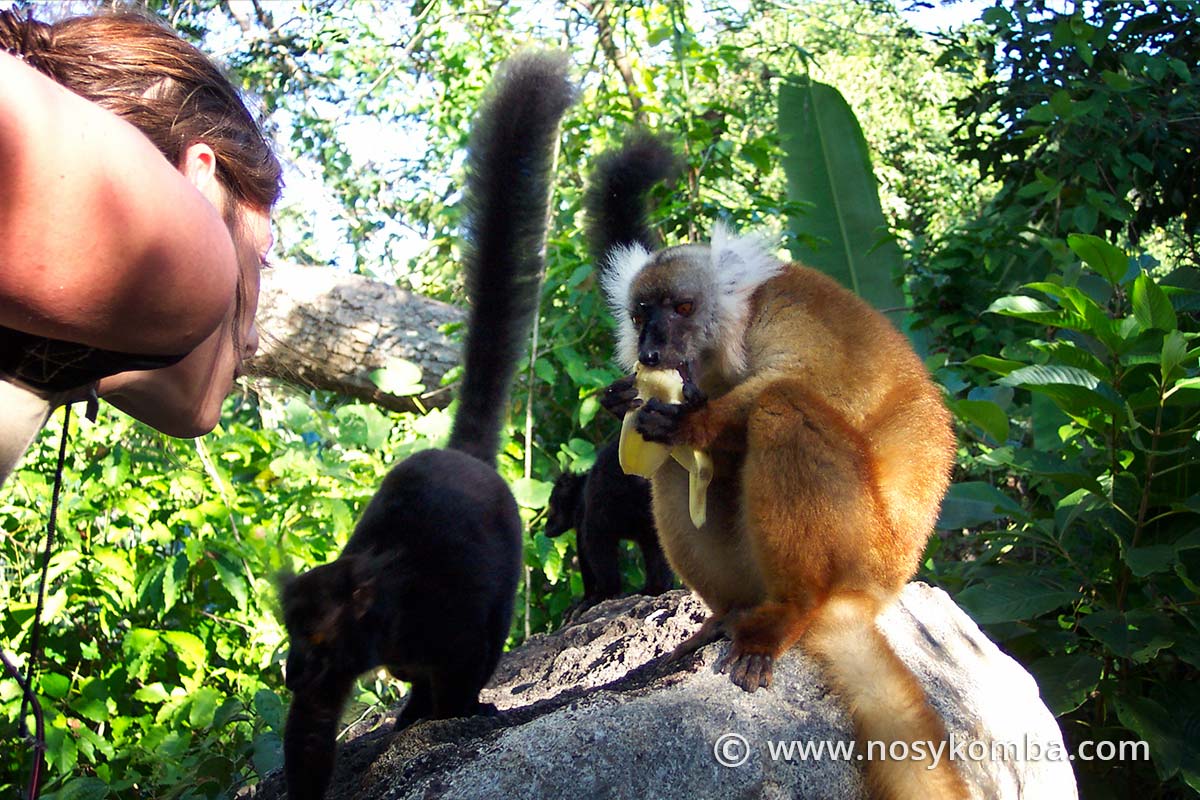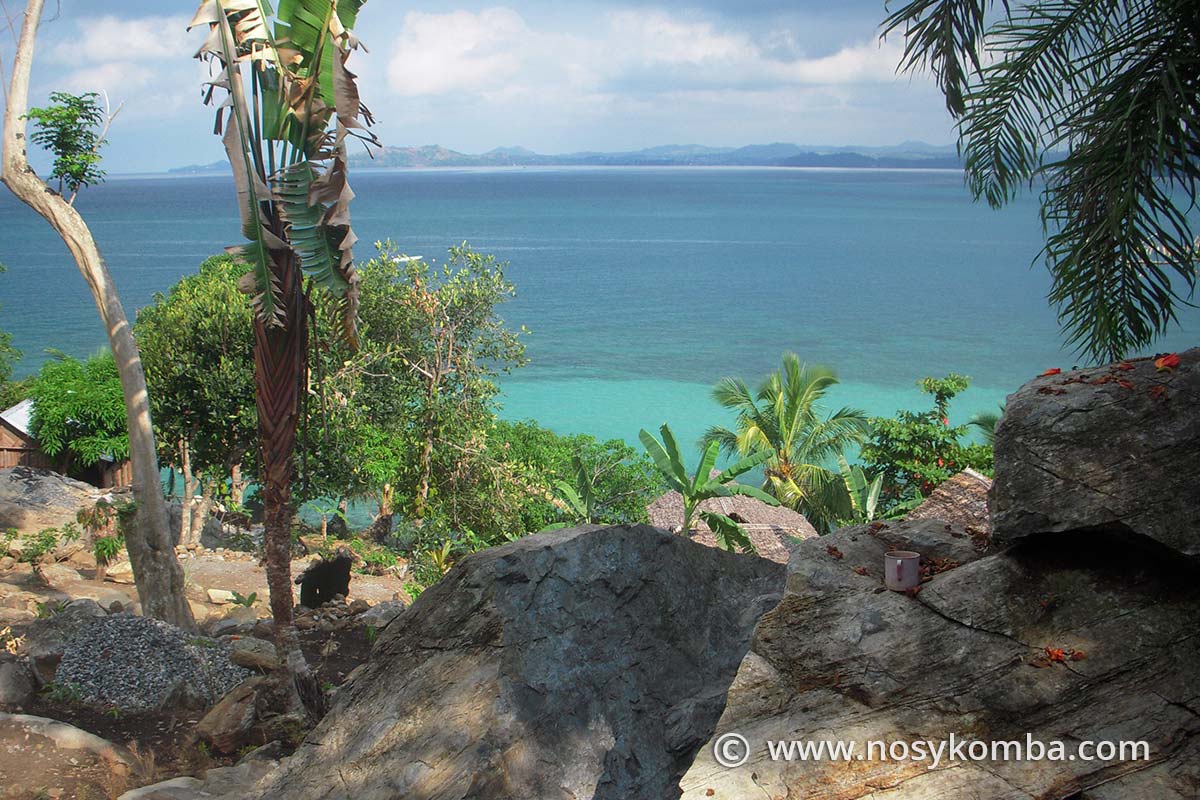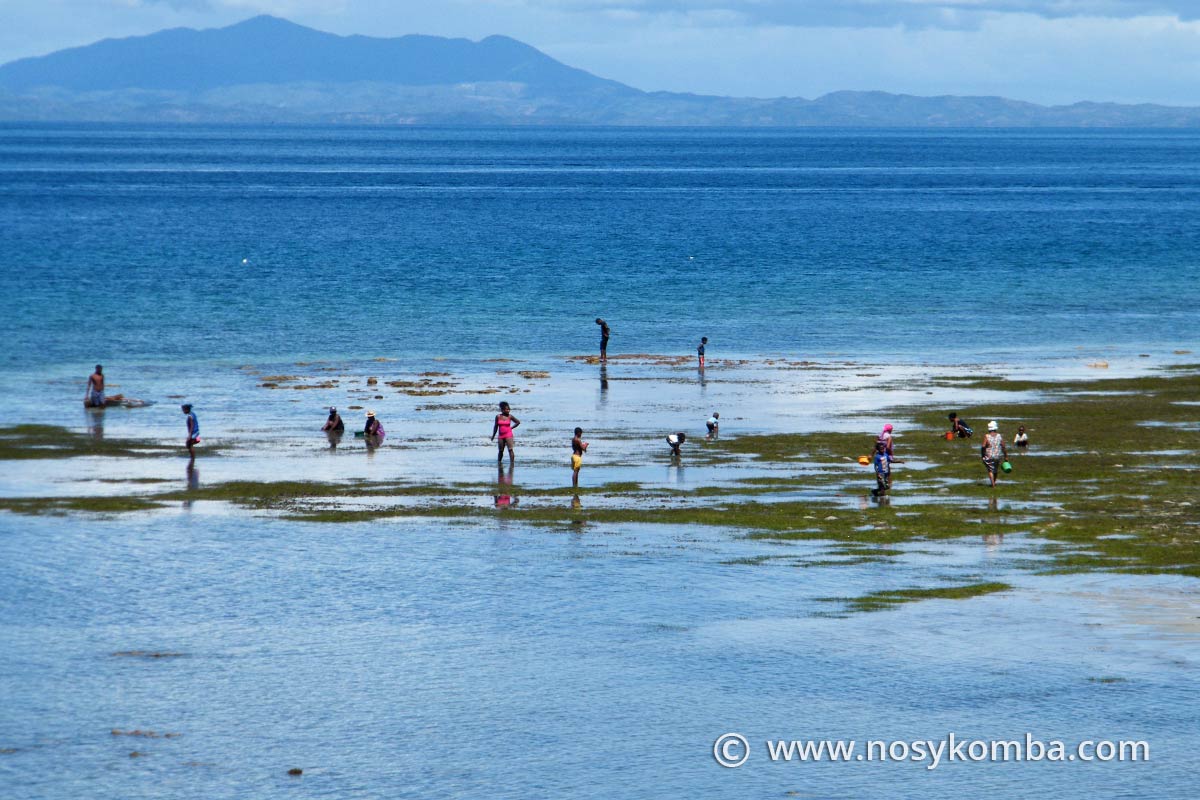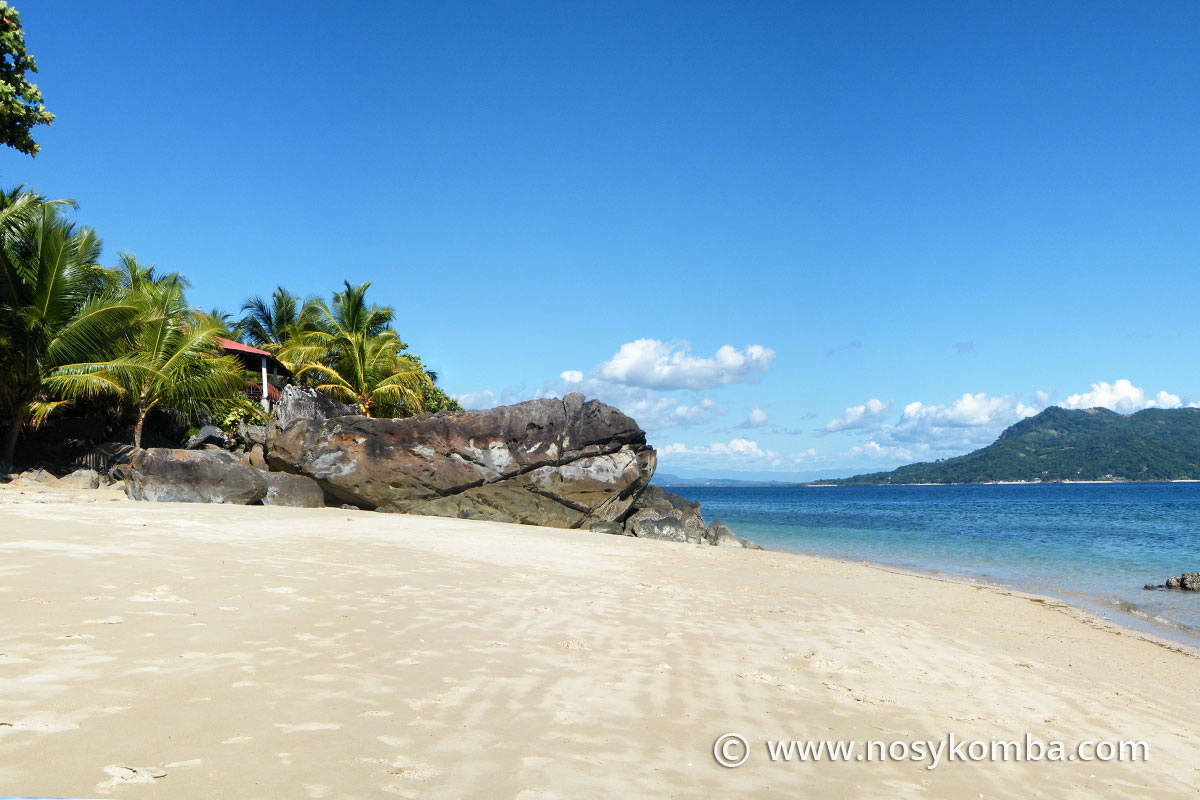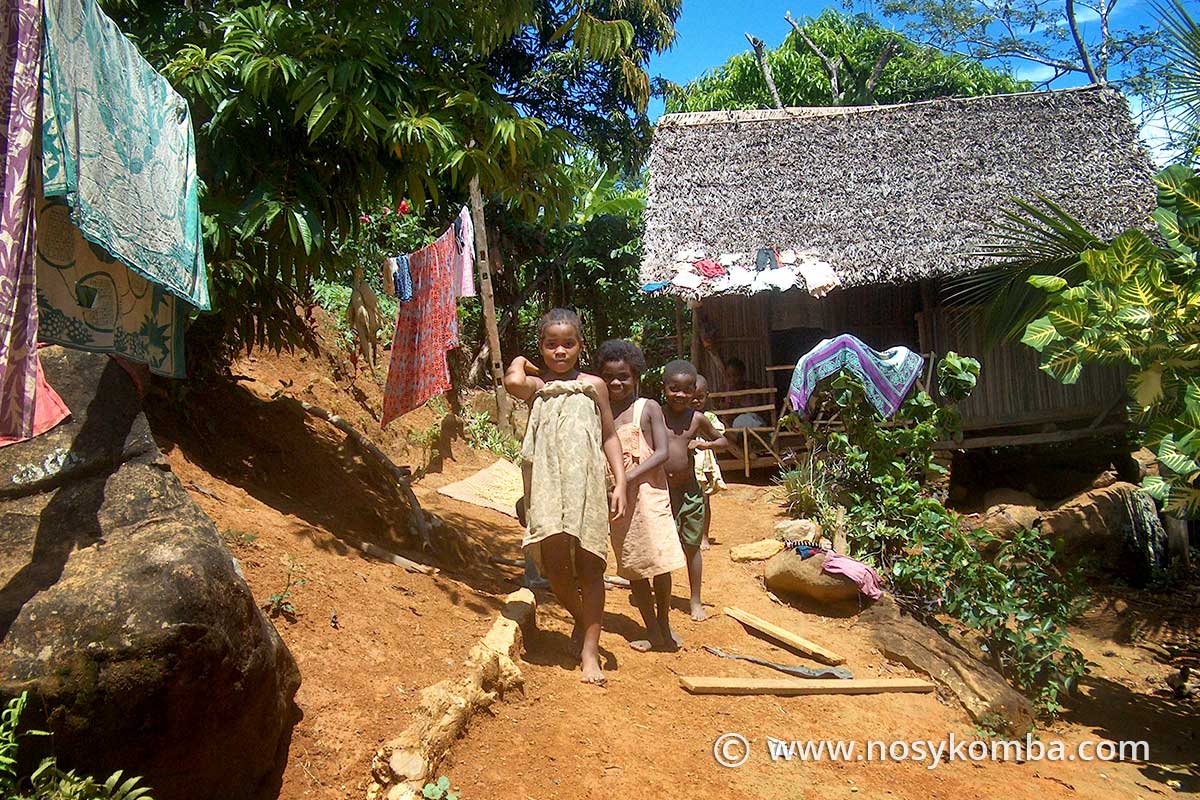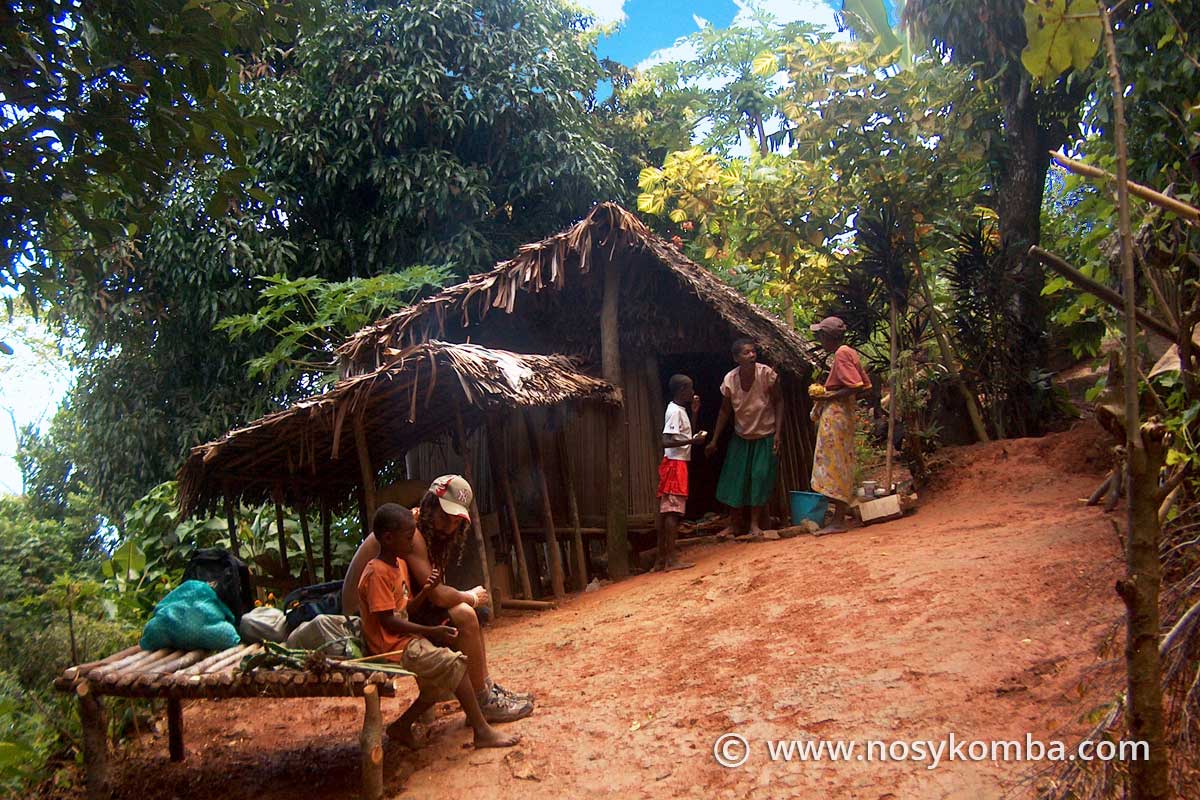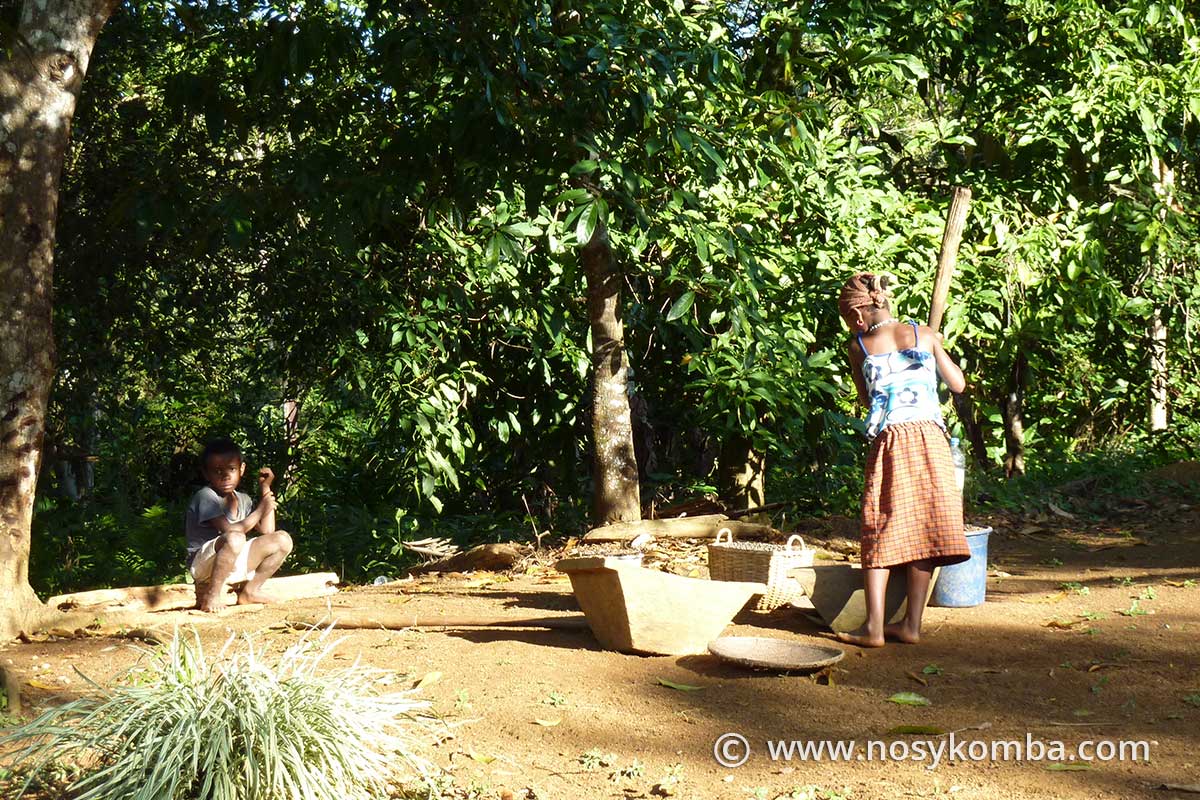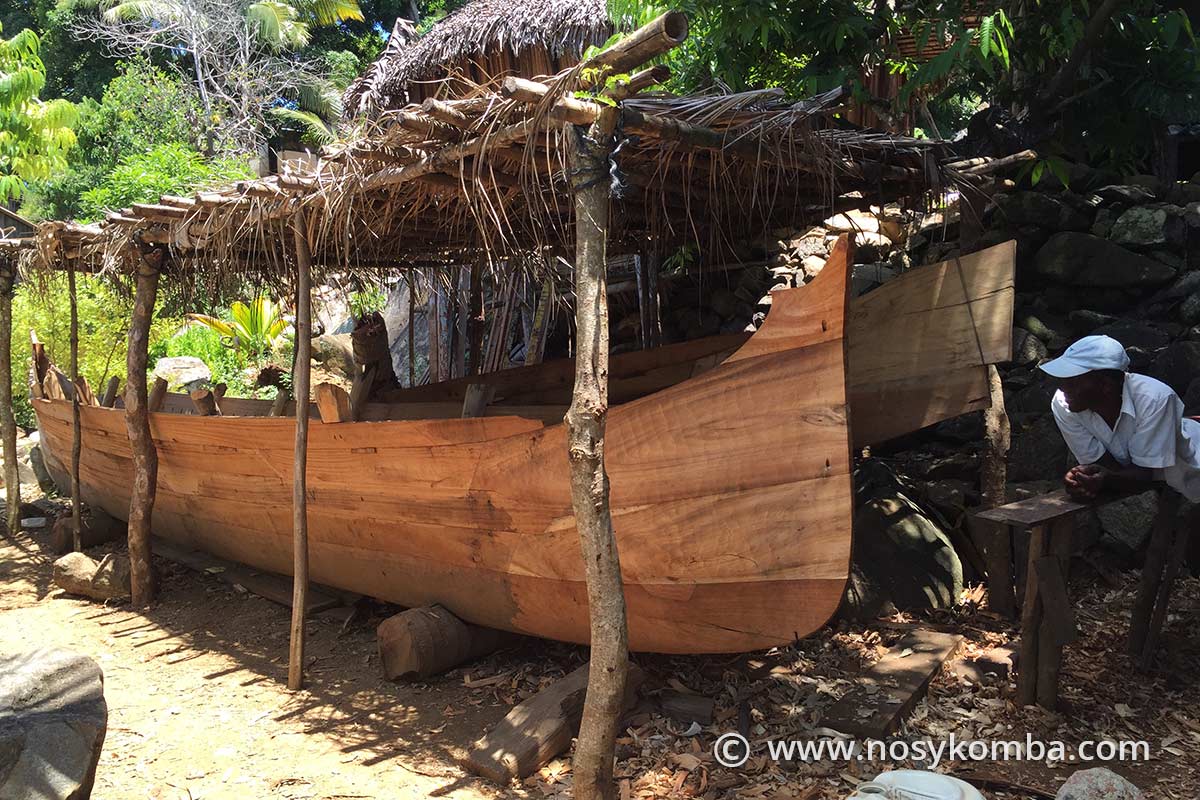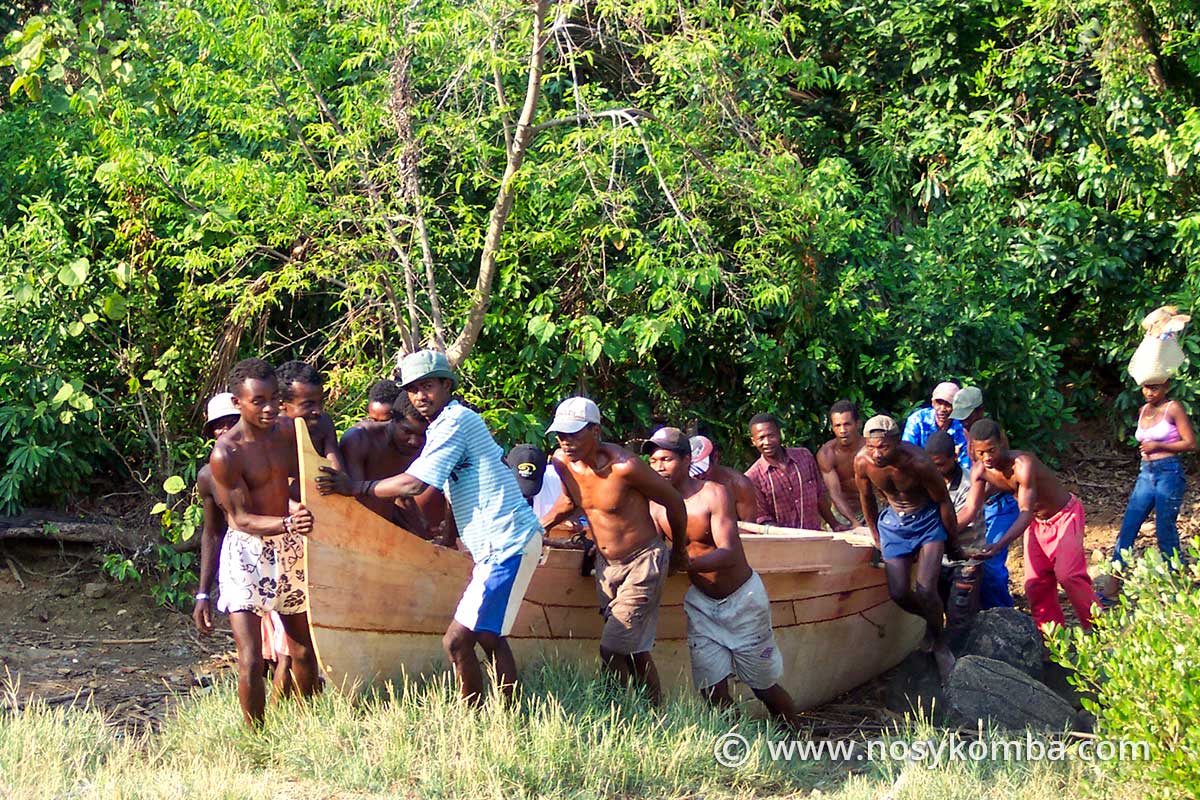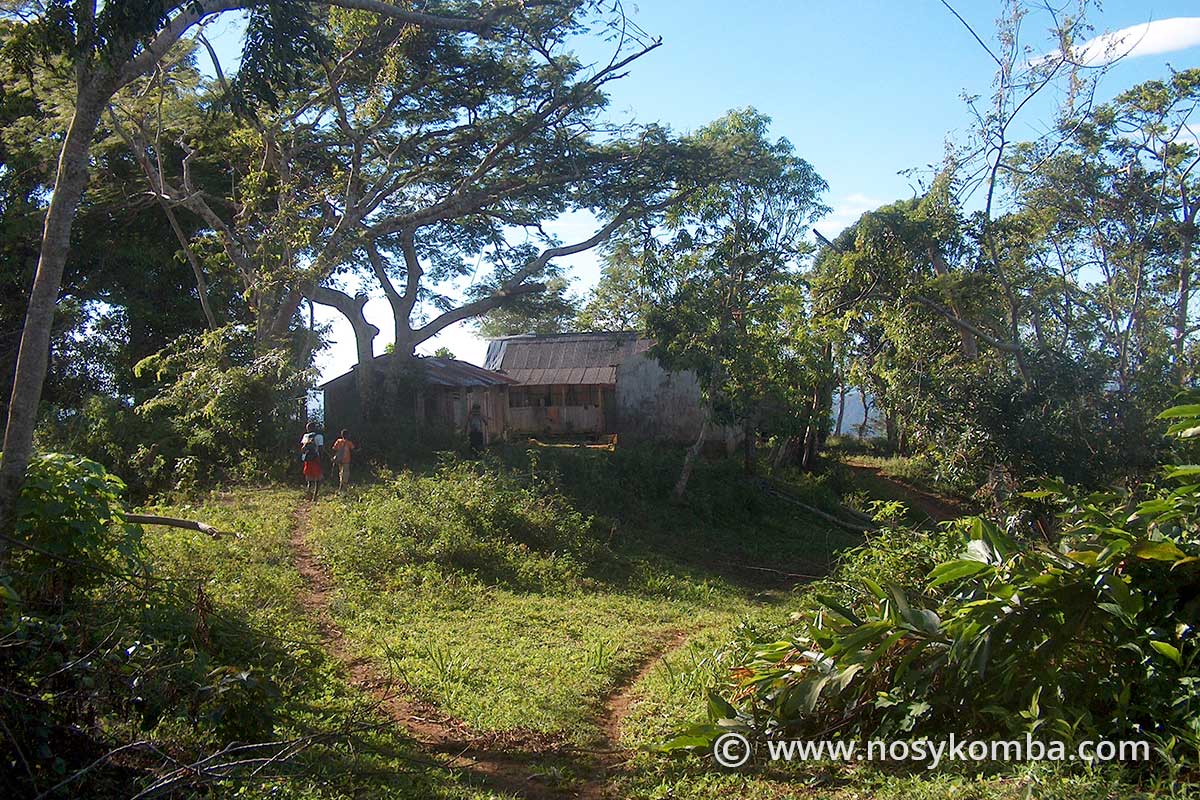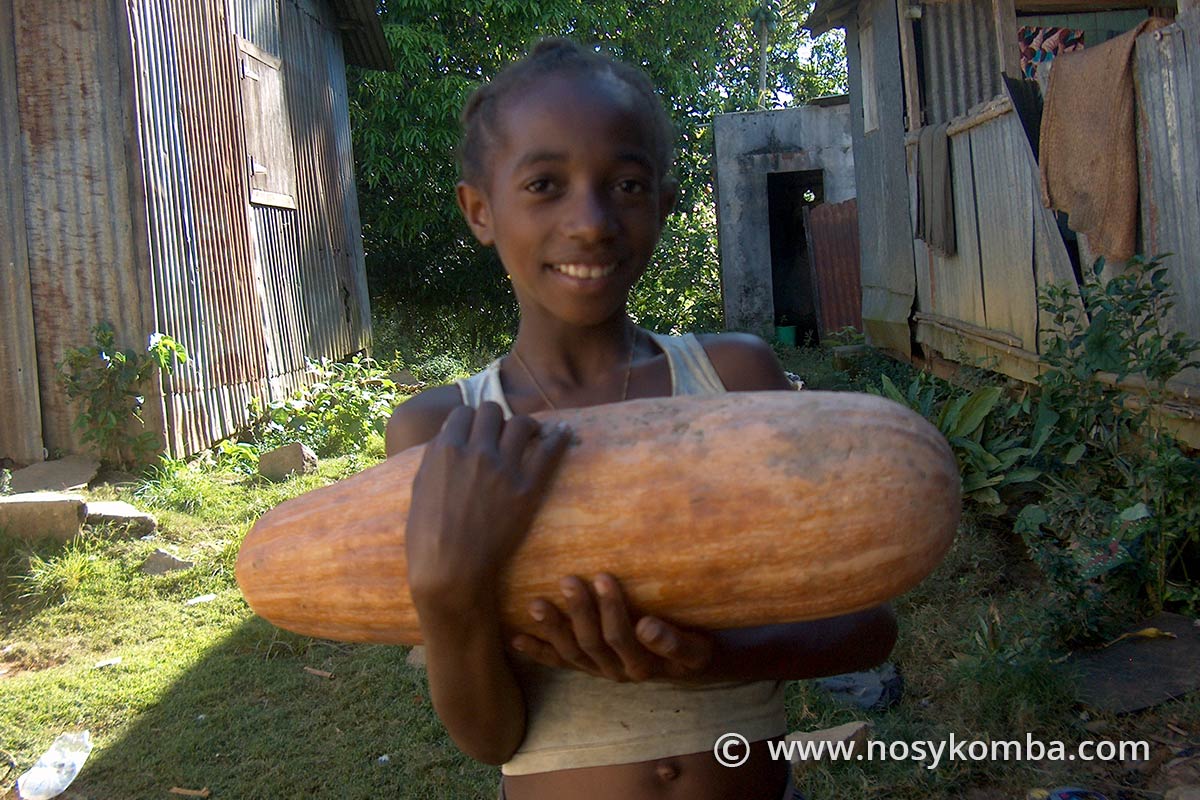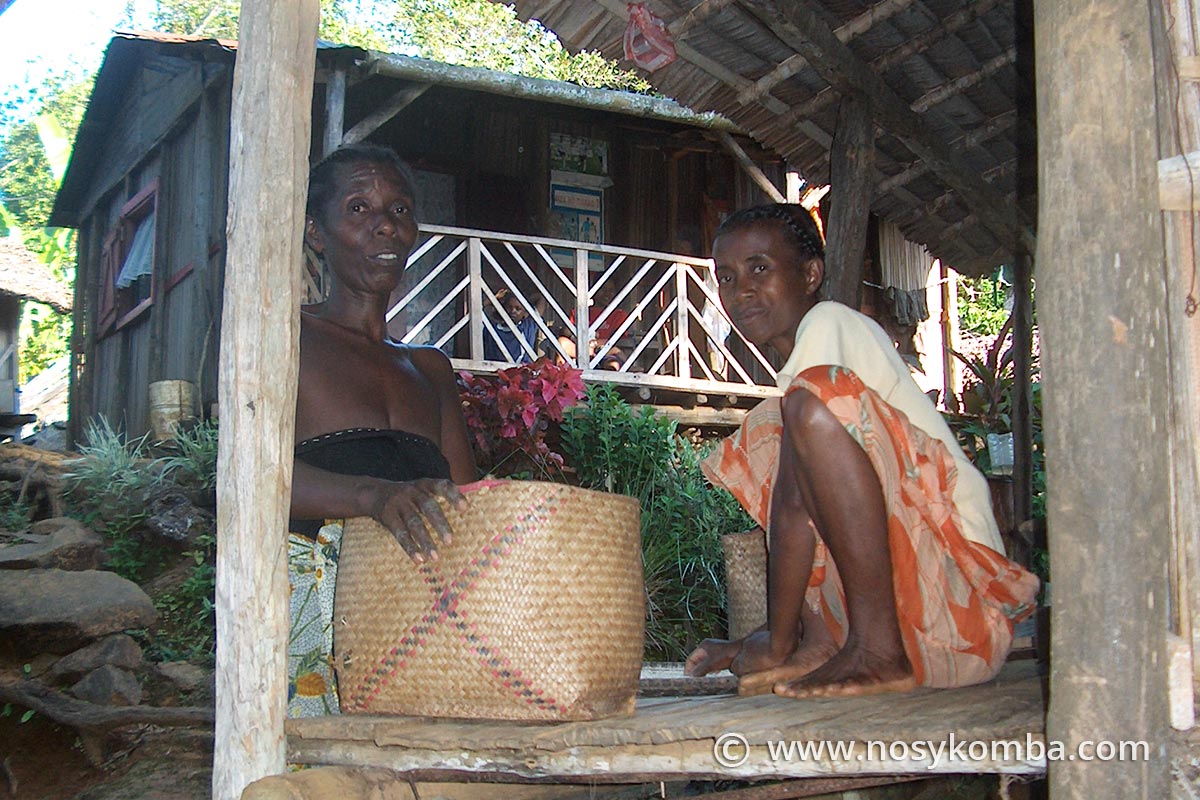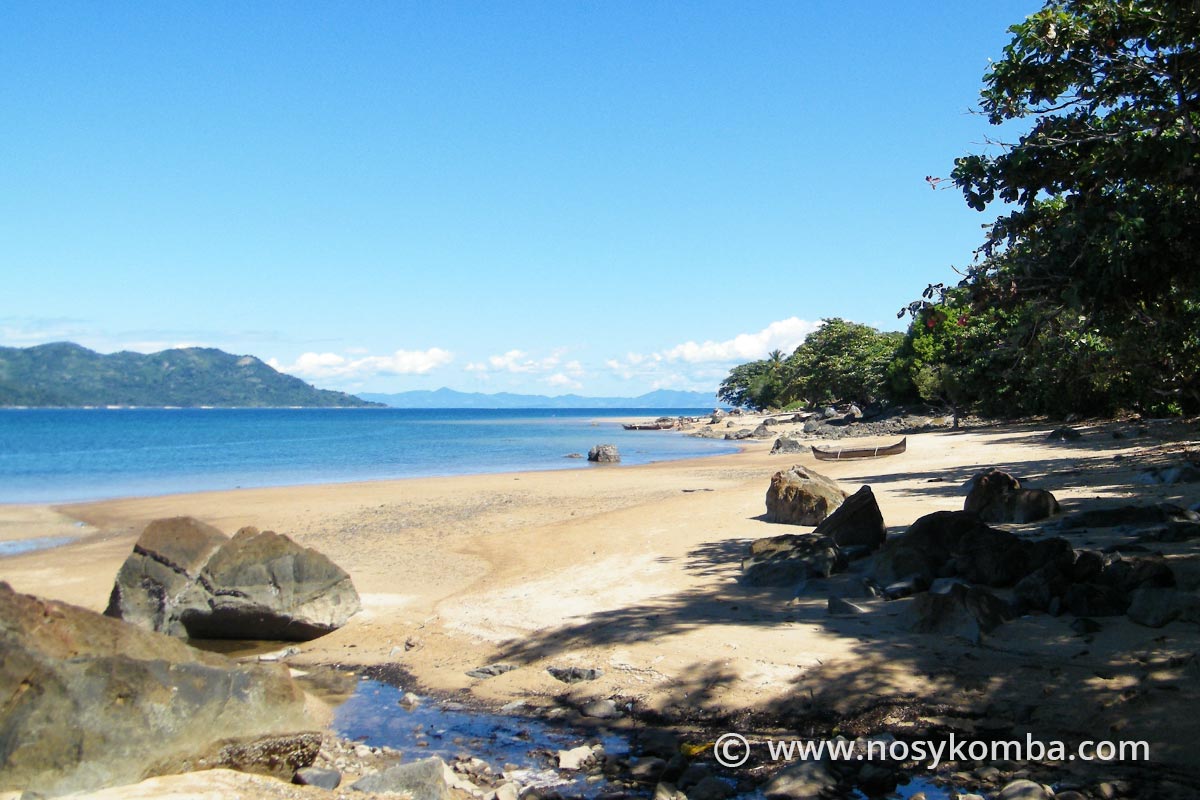Ampangorina
Daily, a lot of tourists visit Ampangorina, the largest village on the island, watching game of the maki Macaco whose habitat is the North Western of Madagascar.
Handicraft shops and stalls of local handicrafts, several hotels restaurants and especially the presence of lemurs make Ampangorina the most visited village on the island.
Handicraft shops offer the Richelieu embroidery tablecloths which are particular to the island. You can also find Malagasy basketry, lambas (pareos), wooden statues, Malagasy paintings rich in warm colours, spices, achards (local condiments), models canoe (pirogue), necklace seeds…

Andrekareka
Andrekareka is divided into two parts: Andrekareka Hely and Andrekareka Be. Like all the villages located west of Nosy Komba, Andrekareka is exposed to the thermal wind, which blows almost every afternoon. This wind is called the Talio.
Andrekareka Hely fishing village which is now to expand since the advent of vazahas (foreigners) to build their main or holiday home.
Andrekareka Be is also a fishing village which is famous on the island for the manufacture of terracotta pots. These pots are used for plants, but also to collect hot embers.
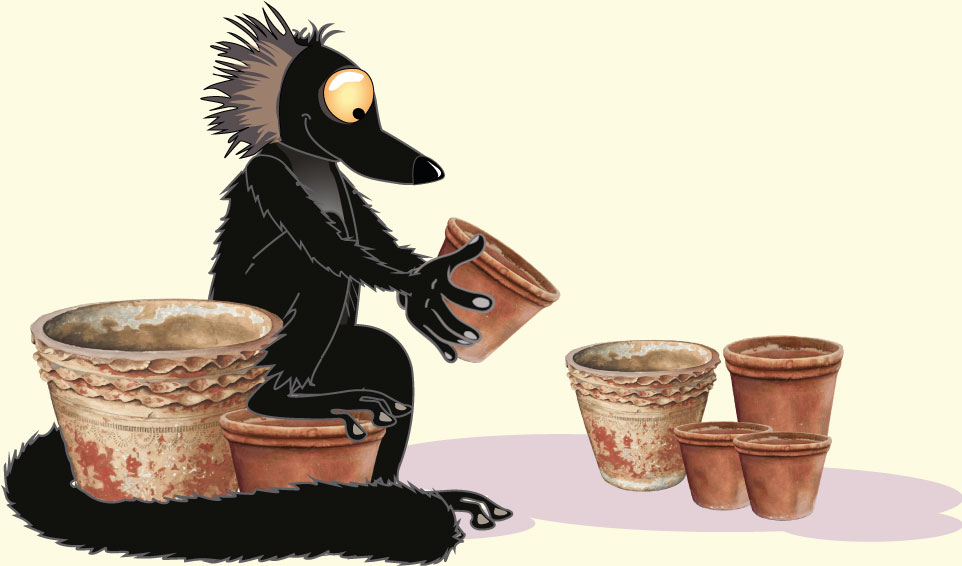
Anjiabe
This fishing village in the southwest of the island is very large. It is the second most populated village on the island. For many years, vanilla farming has been the main activity.
The wooden pirogues of Anjiabe stand out with their roof to protect passengers from the sun or rain.
As in all the villages of Nosy Komba, whether on the waterfront or in the mountains, scenes of Malagasy life remain the same. Women braid their hair or prepare the meal. Men who have completed their cultural work or fishing benefits to bask under a local tree (tamarind or mango) or they engage in furious dominoes games.

Ankiririky
Most of the fruits of the island come from the mountains. In Ankiririky you can find: bananas, pineapples, mangoes, papayas, soursop, avocados, breadfruit, but also vanilla, cocoa, coffee and pepper plantations.
Villagers down the mountain several times a week to the villages of the littoral to sell their harvests in Nosy Komba and also in Nosy Be.
Children down to the main seaside villages every day to go to school. They come back in the afternoon, whatever the season. However, the Akiba school, located in the highlands, welcomes more and more children.
Ankiririky is a privileged place to immerse yourself in local life.

Antanabe
It is the largest village in the mountains. An ideal place to get an insight into the daily life of the people in the interior of the island.
Life in Antanabe is rural: the villagers live from their crops and livestock. They grow fruits, vegetables, breeds, tobacco, spices and vanilla.
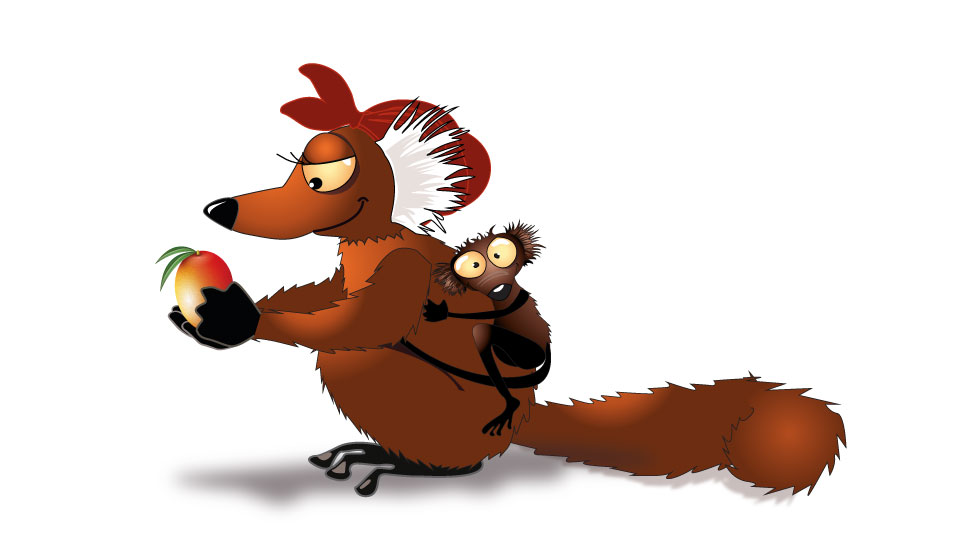
Antamotamo
Fishing village and pirogue builders (wooden canoe). It is the main place of the Zafiny Mena royal lineage in Nosy Komba. Most of the wooden pirogues of Nosy Komba are built in the village.
Antamontamo is not on the circuit of tourist attractions in the region, however, there still prevails a calm authentic environment.

Antanamonpera
Located 500 meters. When the French took possession of Nosy Komba and Nosy Be in 1841, the French Catholic missionaries have created a home for priests on this site, that’s the reason of the origin of the name”Antanamonpera”.
Until the 1970s, the priests supervised ylang ylang plantations whose flowers were distilled in the village of Ampangorina.
Next to the former priests’ home is the reserve of Antanamonpera. In 1947, Reverend Father Albert, a member of the Capuchin community, initiated an arboretum that welcomed trees from all over the world and whose aim was to reforest an area of 60ha. Today only a few trees are still present.

Antanasefo
Antanasefo, “The village of the chief”, is located at 510 meters altitude.
Historically, the leader chief of Ampangorina lived there.
There are many crops of vanilla, ylang, pepper and coffee…
Tsarabanja
A little south of Antanasefo, in Tsarabanja, lives Robert, a famous healer known throughout the region, who for many years made “betsabetsa”, an artisanal beverage made from the fermentation of cane bark and juice.
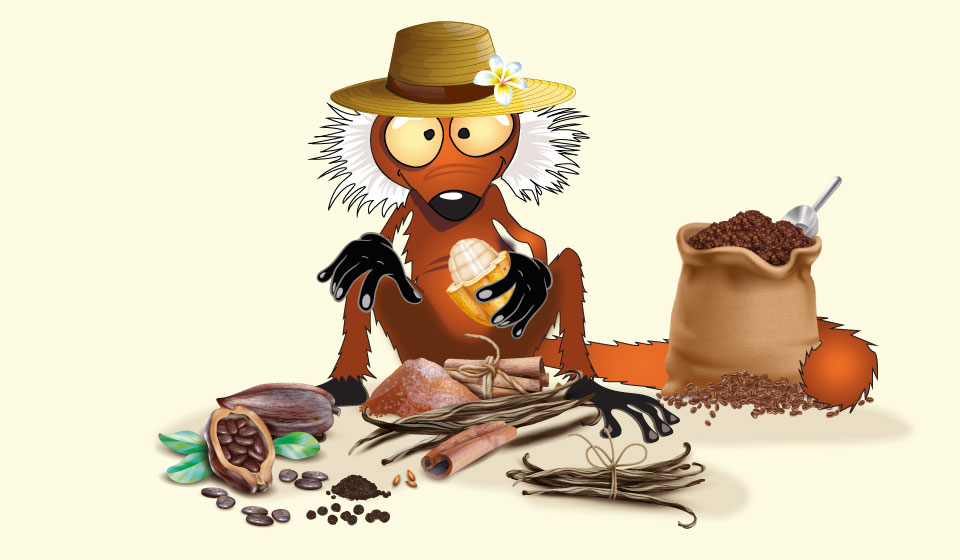
Antitorono
Antitorono is a fishing village near the waterfall of the Andranobe river.
Some young people fish sea cucumbers. The older one’s fish with nets that they make themselves. The village benefits from the hydropower turbine was installed in the river which produces energy to supply the villagers with electricity for a small fee.
Stefano, originally from Rome, spends a good part of the year there and takes place the development of the village: roads, water supply, school, buildings.
Flobert, like his father Robert, the bonesetter of the village of Tsarabanja, is a local osteopath who receives many patients from the island, but also from the whole region.


Antranokomanda
Located at the top of the island at more than 600m, the residence of the commander was the place where the first chiefs of the district of Nosy Be lived. There was a sanatorium. Antranokomanda is no longer a place.
A little to the east, there is a panoramic point of view from which one can observe the whole bay of Nosy Be, Nosy Faly, and on a very clear day it is possible to see Nosy Mitsio and even the French mountain in Diego-Suarez.
Antrema
Antrema is a fishing village located at the southern end of the island, is knownits crystal-clear sea and fine sandy beaches.
The beaches of Antrema may remind you of the beaches of the Seychelles, lined with huge rocks, where the clear water caresses the soft sand.

Humpback dolphins love to perform there.
Facing Antrema, we see the island Dumanoir, a small rock where lies the tomb of a colon who lived in Ambanja, Mr. Dumanoir.
Sarodrano
Also called “the village blacksmith”, Sarodrano is known for its cemetery.
In 1895, during the first phase of the Franco-Merina war, the French military casualties of the fighting were transferred to a sanatorium near the village to be cared for by Catholic priests. There was dead, and among them some are buried in the cemetery west of town where there are 99 graves.






